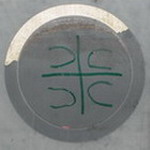offline
- Toni

- SuperModerator

- Pridružio: 18 Jun 2008
- Poruke: 31213
|
Tri aviona nabavljena 1997.
Israel’s Secretive MiG-29 Fulcrum Test Program
https://www.thedrive.com/the-war-zone/israels-secr.....st-program
Citat:
Against the F-15 and F-16, the Soviet-designed jet was found to be a “serious opponent,” superior in certain scenarios to the Israeli fighters.
“The aircraft is highly maneuverable, and its engines provide a higher thrust-to-weight ratio,” observed Israeli test pilot Maj. N. “Our pilots must be careful with this aircraft in air combat. Flown by a well-trained professional, it is a worthy opponent.”
Specifics of how those dissimilar air combat drills played out have not been revealed, although Lt. Gen. M. noted that the MiG’s advantages were most prominent “in a tight [turning] battle.”
“It’s an advanced aircraft, and in close maneuvering engagements it is absolutely terrific,” Lt. Gen. M. continued. “It makes sharp turns, it’s quick, and to my opinion, as a platform, it does not fall short of our advanced fighter jets.”
Surprisingly, perhaps, the Israelis held the MiG’s N019 (NATO Slot Back) pulse-Doppler radar in high regard, although this is an area where the fighter has subsequently been seen at a disadvantage compared to Western jets of the same era.
“The MiG has an excellent radar system”, said Maj. N. “I was also very impressed with the IRST [infrared search and track] system. The missile systems provide the jet with a significant advantage. I made good use of the Russian helmet [which had off-boresight cuing capability for its Archer missiles], and I can say that it works fairly well. Having said that, it is less convenient than the Israeli system, and in some ways, it falls short of it. Overall, it works well.”
“I was positively surprised by its systems”, said Lt. Gen. G. “The different parts — radar, helmet-mounted display, and the missiles — are very well combined. The jet is equipped with advanced air-to-air guided missiles, as well as radar-guided missiles. The jet features an IRST system, which identifies targets by their heat signature, without using radar. All these, combined on a relatively good platform, result in an advanced weapons system. The MiG turned out to be an advanced fighter jet, similar to the F-15 and F-16.”
At this point in time, it should be recalled, a passive IRST sensor was still very much a novelty and was found on only a few Western fighters of that era, while it was a standard feature on Russian-made fighters.
The mention of the MiG’s missile advantage also sounds surprising, seeing as the basic air-to-air weapons of the first-generation Fulcrum are generally seen today as one of its drawbacks. However, at this stage, the Israeli Air Force was still using the semi-active radar-homing AIM-7 Sparrow, rather than the active-radar AIM-120 AMRAAM, and was yet to introduce the latest models of its homegrown heat-seeking Python missiles, which were specifically designed to outperform their Russian counterparts.
Other features that won the praise of the Israeli pilots included its level of automation, which took certain critical parts of flying out of the pilot’s hands, allowing them to concentrate on other elements of the mission.
"One of the greatest tools available to the pilot in this jet, is its ability to land by itself, without the need for [the] pilot’s involvement,” said Maj. N. “The landing destination is entered into the computer before takeoff. In case of bad weather, or any other difficulty, hampering the pilot’s ability to land, he simply needs to press a button, and the jet will land by itself.”
The same pilot also noted, however, that this function was not actually put to the test during the evaluation.
“Another system worth mentioning is the one that stabilizes the jet in case the pilot is affected by motion sickness and loses his orientation in space. Such systems do not exist in Western aircraft, counting on the pilot to handle such situations independently,” Maj. N. continued. This has changed in a big way in recent years.
Despite features like this that were designed to make the job of the task-saturated pilot easier, it was also found that the overall human-machine interface was a weak point of the MiG.
“One of the greatest problems of the MiG is its human engineering,” Maj N. said. “Most of the systems installed are good overall, but their combination and the user interface are cumbersome, and need improvement. On several occasions, I needed a certain piece of information which was not showing on any of the cockpit instruments.”
Furthermore, the inability to carry significant amounts of air-to-ground weapons put the Fulcrum at a disadvantage compared to Western jets.
However, the typically rugged Soviet approach to aircraft design did win praise from the Israelis.
“I was positively impressed with the overall simplicity of the jet,” said Israeli F-16 pilot Maj. H. “The important things are proper and simple. The engine start, for example, is done with a single push of a button, following which there are only a few tests the pilot needs to perform.”
Reliability, overall, was a plus point, as Lt. Gen. G, explained. “The jets had very few malfunctions, and, like other Russian products, the MiG-29 is trustworthy, strong, and massive. The F-15 and F-16 are much more delicate, in comparison.”
|

















